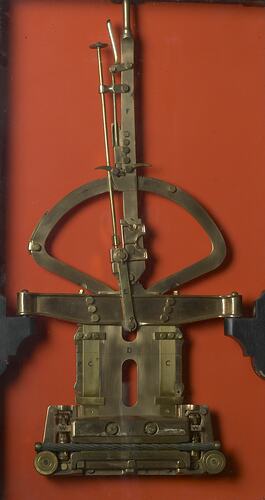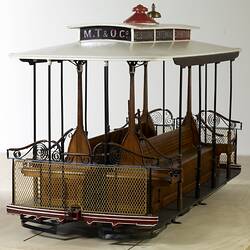Summary
Unit used to grip the moving cable from a tram car. Type fitted to Melbourne cable trams from 1885.
Each grip car or 'dummy' had a grip mechanism which extended through a slot running down the centre of the tracks to clasp the cable and impart its motion to the tram. To stop the tram the grip man first moved the grip lever forward to release the cable and then applied one of two brake levers. The gripman's job required great skill and the same intimate knowledge of his route as a river pilot. As well as learning to pick up and release the cable without sudden jerks that might throw passengers from their seats, the gripman also had to know the precise spot to throw the cable free when rounding tight corners or crossing other tram tracks, leaving the tram with sufficient momentum to clear the intersection. At such points the gripman would give a short tug on the bell cord to warn passengers sing out 'Hold On' or 'Mind the Curve!'
Operating between 1885 and 1940, Melbourne's cable tram system was the world's fourth largest, encompassing at its peak, 17 routes running over 75 kilometres of double track. The system was largely constructed by the Melbourne Tramways Trust that was formed by act of parliament in October 1883 and included representatives from Melbourne's 12 inner municipal councils.
As each line was completed it was leased to the Melbourne Tramway & Omnibus Company, which operated the system until it reverted to government control in 1916.
More Information
-
Collecting Areas
-
Acquisition Information
Donation from Melbourne & Metropolitan Tramways Board (MMTB), 01 Jun 1925
-
Date Used
-
Classification
-
Category
-
Discipline
-
Type of item
-
Overall Dimensions
265 mm (Width), 35 mm (Depth), 560 mm (Height)
Estimated dimensions of model - accurate to +/- 5 mm only.
-
Other Dimensions
380 mm (Width), 60 mm (Depth), 665 mm (Height)
External dimensions of display case.
-
Model Scale
1:4
-
Keywords

